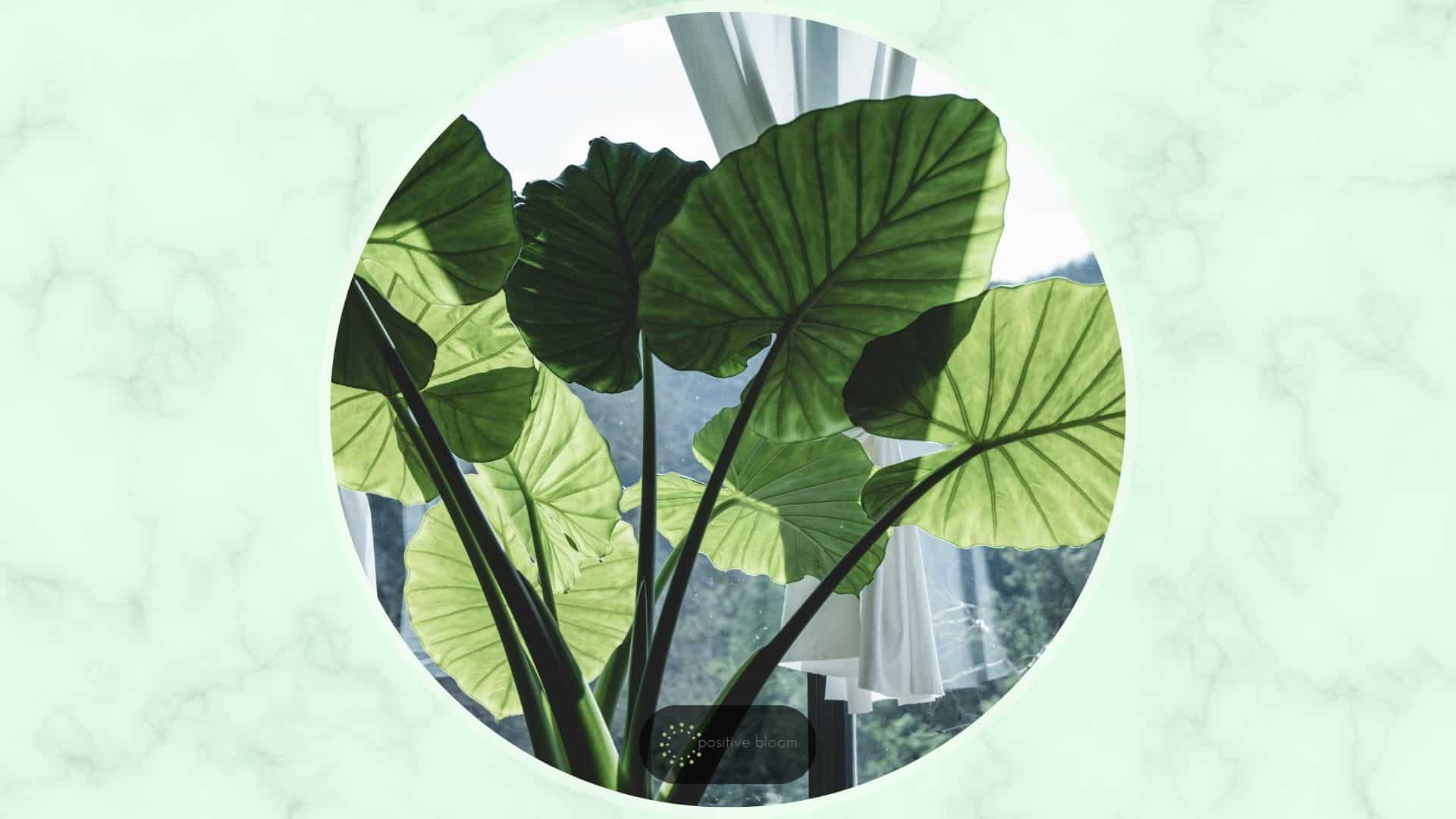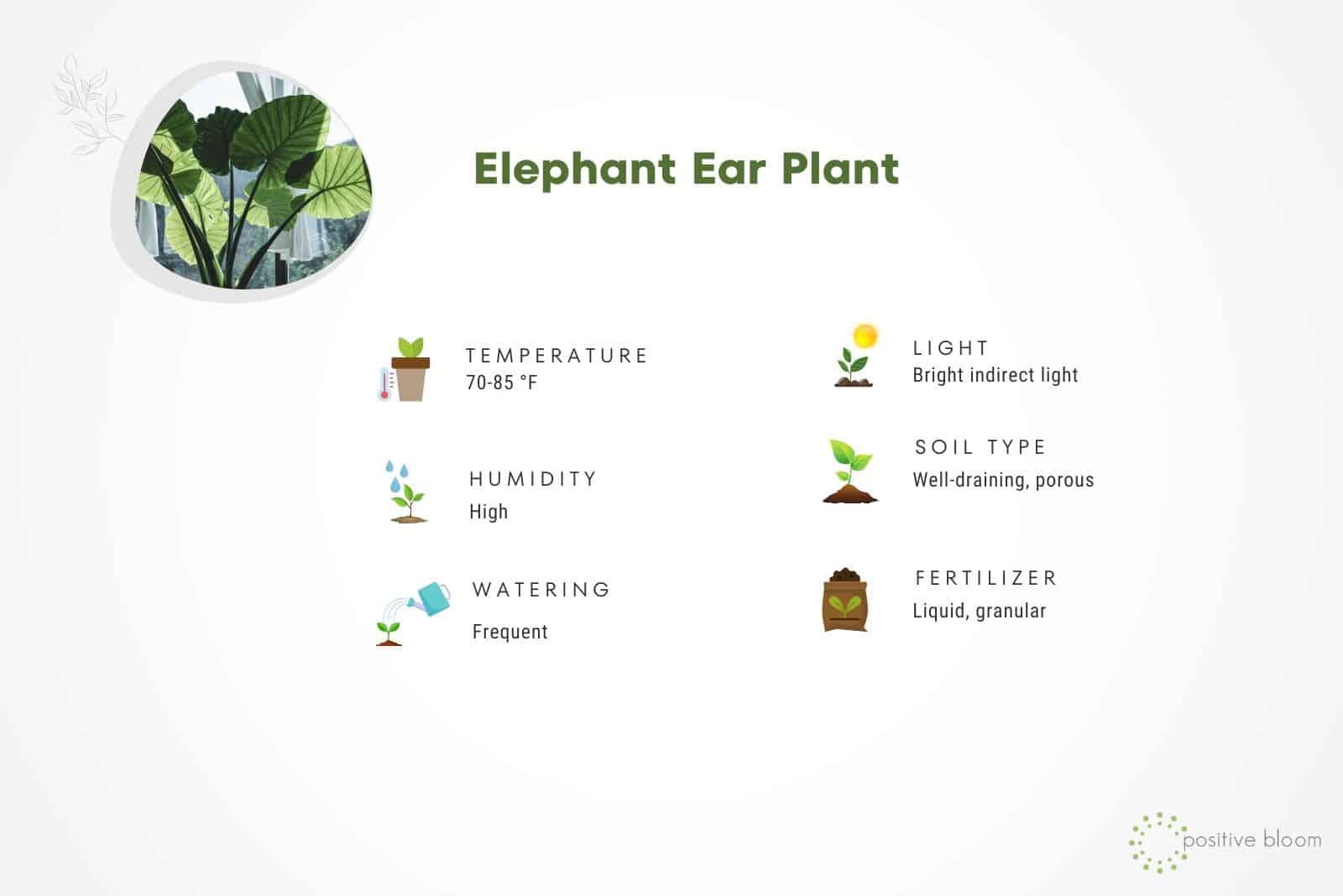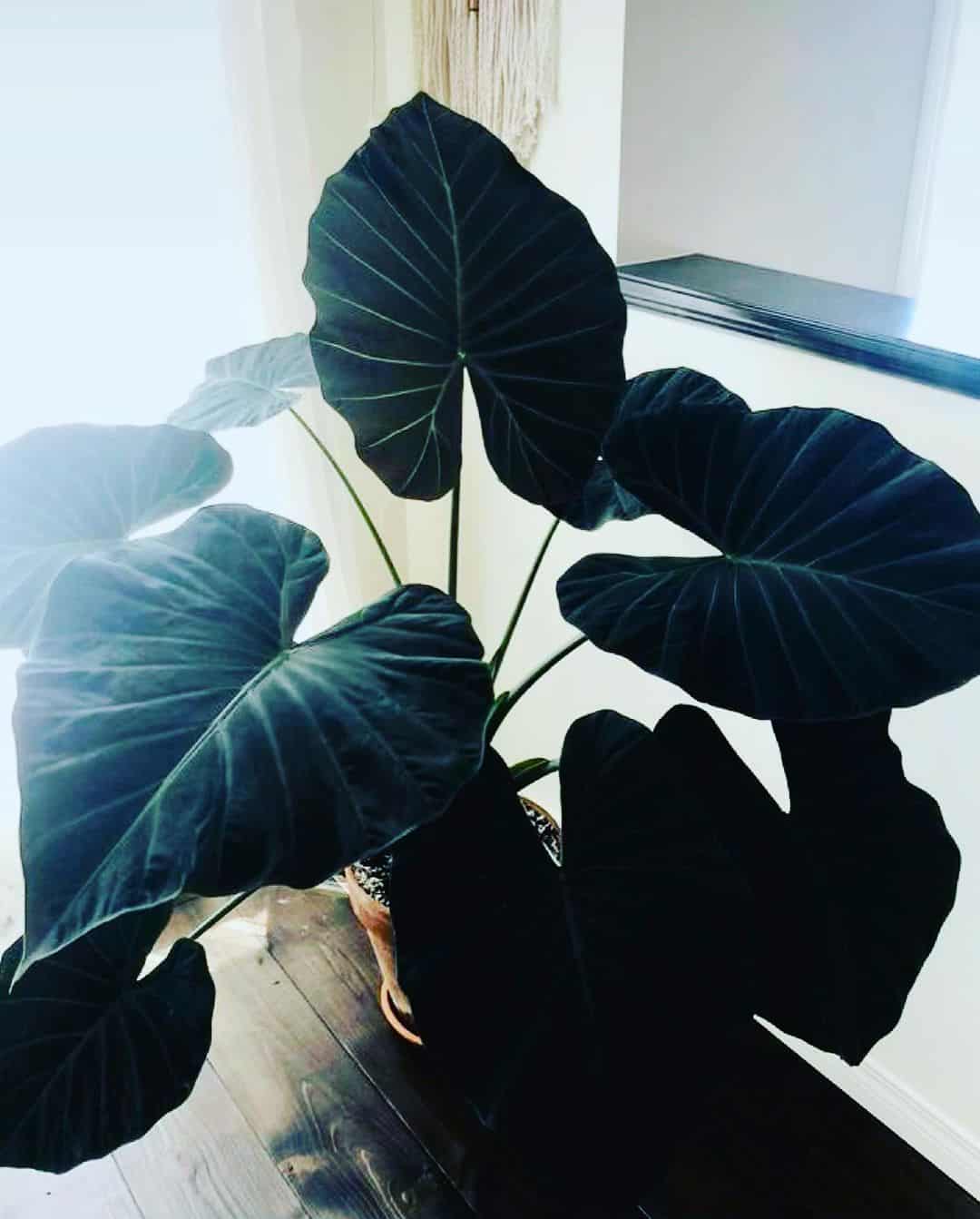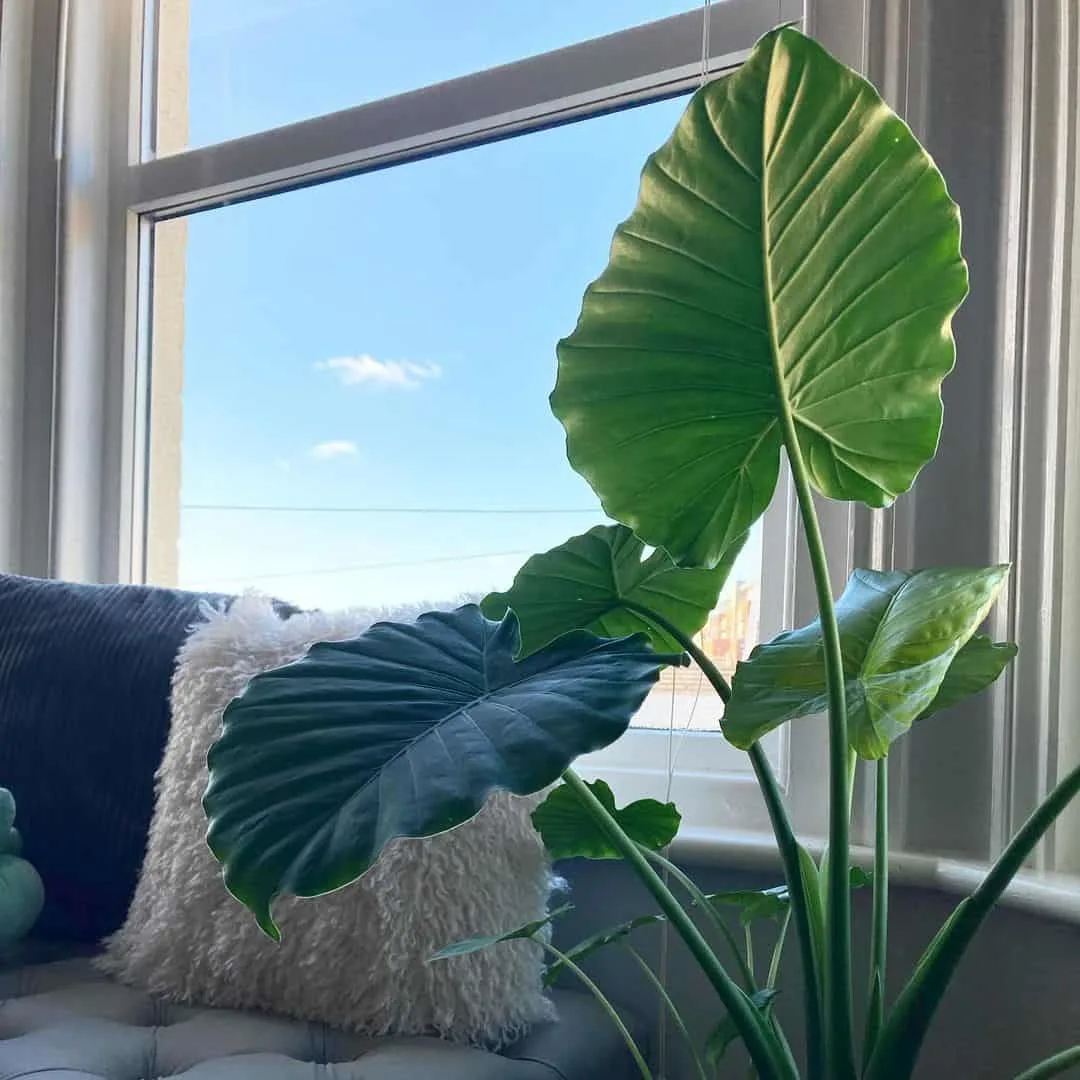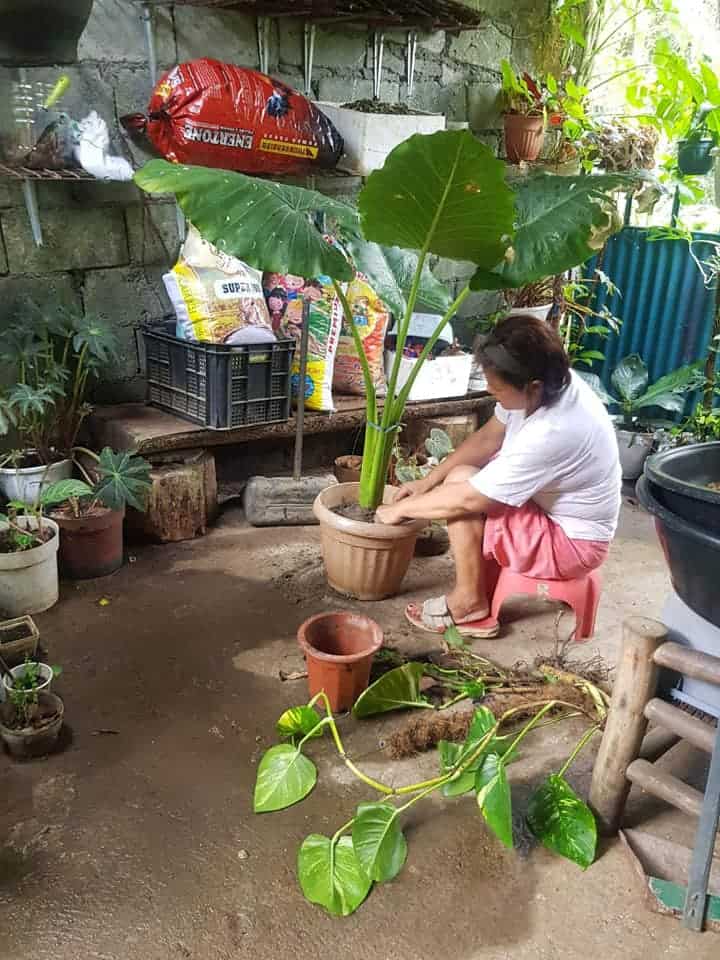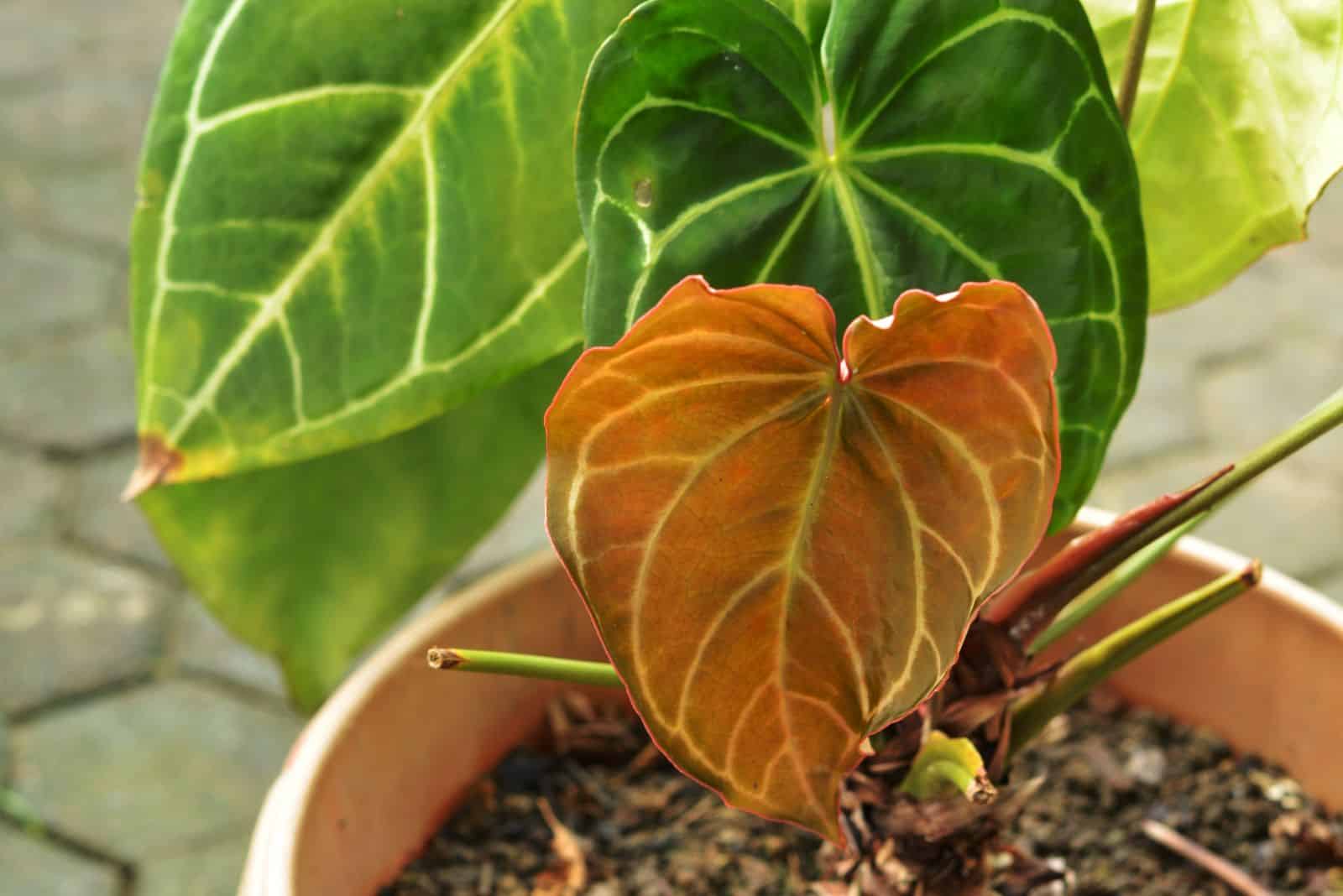The elephant ear plant is a tropical plant that produces magnificent green leaves which resemble an elephant’s ear, hence the name. In fact, there are two plant species that are referred to as the Elephant ear plant: the Alocasia and Colocasia.
Sometimes, it is hard to differentiate between the Alocasia and Colocasia, but the key differences are their leaves, roots, and flowers. Don’t worry, both plants produce glorious leaves that can lift up the spirit of any room!
Even though growing Elephant ear plants indoors might sound scary – trust me, it is actually quite easy. They require similar plant care as any other tropical beauty.
If you want to find out how to grow an Elephant ear plant indoors, keep reading!
How To Grow An Elephant Ear Plant Indoors
First of all, you have to take into consideration that these plants take up a lot of space. The Elephant ear plant’s leaves can grow approximately 2 to 3 feet wide, which means that you will have to provide them with a large space to let them grow and thrive.
Other than that, these are relatively low-maintenance plants that require basic plant care.
Let’s dive in!
Soil Requirements
Both the Alocasia and Colocasia have relatively similar requirements. When it comes to soil, these plants need nutrient-rich, well-draining, and porous soil. They prefer slightly acidic to neutral soil with pH levels from 5.5 to 7.0
Although loamy soil is ideal for aroid plants, you can always purchase a suitable potting mix.
Perlite, peat moss, and bark should all be components of the potting mix. Make your own potting mix if you like, but be sure the soil isn’t too heavy or too sandy, and that it holds moisture effectively.
Water Requirements
The Elephant ear plant prefers soil that is consistently moist, which would be soil that is neither soggy nor dry. This implies that since many other elements, including temperature and humidity, affect water requirements, it can be challenging to establish a regular watering schedule.
This is especially important because overwatering is a huge issue with the majority of tropical plants. Overwatering often leads to root rot (a deadly fungal disease that can completely ruin your tropical beauty).
The best move is to examine the soil before watering. You should water it if the top 2 inches of the soil have dried out, and you can easily check with your finger to see if watering is necessary. I would advise you hold off on watering the soil for a few days if it is still a little moist.
Growing tropical plants in pots with drainage holes is also a must because the excess moisture needs to drain out quickly so the plant doesn’t end up sitting in soggy soil.
Light Requirements
Elephant ear plants prefer growing in partial shade, though they can both survive in full sun. Be careful though, because you don’t want too much direct sunlight to burn those lovely leaves!
When working with a variegated plant, such as the Alocasia Odora Variegata, the amount of leaf variation is what determines how much light is needed. In other words, because the white areas of the leaves lack chlorophyll, they will need much more intense and indirect light if they have more white spots than green patches.
The green regions must carry out photosynthesis because the white patches are unable to do it. A plant cannot produce enough energy or nutrients to survive if its leaves are completely covered in white patches.
In general, these plants like bright indirect light, but they can tolerate a few hours of direct sunlight in the late afternoon or early morning. The leaves of this plant will scorch and lose their variegation if you leave it in direct sunlight all day.
This is why putting them near an east-facing window is a good idea. If you can’t find the perfect location, you can always put a sheer curtain over a window that is exposed to direct sunlight, or you can invest in a good set of grow lights.
Temperature Requirements
Since these plants originate from tropical regions of Eastern Australia and Asia, they are used to growing in warm temperatures. Because of this, both the Alocasia and Colocasia like warm climates, with ideal daily temperatures falling between 70 and 85 degrees Fahrenheit and overnight lows of 60 degrees.
Bring this plant inside if winter is coming. The tubers should always be kept indoors and planted outdoors the following year.
Regularly subjecting your plant to lower temperatures will cause it to initially go dormant before the leaves start to fall off, ultimately killing the entire plant. Keep the plant away from cold drafts, air conditioners, and cooling fans, as well as heat sources like radiators or fireplaces.
Humidity Requirements
These tropical plants absolutely love humidity. The humidity is too high if you notice that your Elephant ear plant is dripping water – this is a process called guttation, in which the water starts to flow up through the plant because of the increased water pressure. This can also be caused by overwatering.
You should never let your Elephant plant completely dry out.
The ideal humidity level for these plants is around 70%, though the Alocasia can tolerate even higher humidity levels. In order to protect the plant’s well-being, humidity levels below 70% should be avoided. If you notice curling leaves, you should immediately raise the humidity level in your home.
How To Improve Humidity Indoors
You want the leaves to be big and glossy, which is why you have to find some way to improve humidity.
There are several ways that you can improve the humidity in your home. If you don’t mind spending some money, I would recommend you buy a humidifier. This is the easiest and most efficient way to boost humidity.
The next method would be misting. Misting your plant on a regular basis can also provide the moisture that your plant needs. However, I would not recommend this method as it can attract fungi and pests.
You can also try and make a pebble tray. All you have to do is get some pebbles, cover them with water, and put your plant on top. As the water evaporates, it will provide moisture for your plant.
The Elephant plant can also be grown close to other tropical plants, which is advisable if you want to improve humidity.
Fertilizer Requirements
Even though they are big, these plants often don’t require that much plant food. Only fertilize them from spring through summer, which is when they are actively growing. The Alocasia and Colocasia go into dormancy throughout the winter, so there is no need to fertilize them.
You can use small amounts of either liquid or granular fertilizer, but in both cases you must apply it once a month during the growing season.
When spraying liquid fertilizer onto a plant, keep the container 6 inches away; any closer and the fertilizer can burn the leaves and roots.
I would advise using a fertilizer that is high in nitrogen because nitrogen encourages the growth of new leaves. Be careful not to overfertilize your plant because the salt and chemicals can accumulate in the soil, preventing the plant from absorbing nutrients and water.
Repotting
You will have to repot the Elephant ear plant at least once a year. They are relatively fast-growing plants, which means that they will need larger pots each year.
If you notice that the roots are coming out of the drainage holes, then it is time for repotting. Prepare new potting soil and buy a pot that is two inches larger than the current one. Carefully take the plant out of the pot and put it into a new one.
You can pick from terracotta, ceramic, or any other heavy material when it comes to the pot’s material. As these plants likes to grow relatively big, the pot needs to be heavy enough to support their growth.
Pruning & Overwintering
It’s always hard to prune those beautiful leaves, but we have to do it sometimes if we want our plant to glow and grow. I am aware of how challenging it can be to remove those enormous leaves, but we must do it in order to maintain the health and growth of our cherished plant!
The unique overwintering procedure, in which all leaves are cut and only the corm is kept for the following growing season, makes timing crucial when trimming.
It’s time to prune your Elephant ear plant when the first cold wave arrives and the leaves start to turn brown. You know it’s time to prune and save the corm when the temperature is lower and the magnificent, green leaves start to turn brown.
With your pruning shears, trim the leaves close to the base, leaving about 2 inches above the ground. The winter is coming, and the leaves are going!
Propagation
Elephant ear plants need to be propagated using a certain technique. Elephant ear plants are grown utilizing tubers or rhizomes as opposed to the majority of plants, which are propagated by cutting stems.
Early spring is the ideal period for propagation because your plant doesn’t grow over the winter and won’t have any baby leaves to interfere with the procedure.
Here are the steps:
1. Water your Elephant ear plant well the day before you plan to propagate it because loose soil is simpler to work with.
2. Removing the plant from its pot is the first step of propagation.
3. Examine the root ball and begin isolating the rhizomes that can be multiplied. Make sure not to harm the remaining roots by only cutting the rhizomes.
4. The mother plant must be replanted in the ground. If you are also repotting, you can put it in a new pot.
5. Place the rhizomes upright in adequate soil. Press it down to keep it from falling.
6. Water it well and follow the instructions we provided for taking care of plants. Everything still holds true for your new plant.
Common Issues With The Elephant Ear Plant
If you don’t take good care of your Elephant ear plant, then you will likely have to deal with certain issues. The majority of these issues are caused by pest infestations or inadequate plant care.
Let’s look closer.
Pest Infestations
Those large leaves don’t scare pesky little pests! In fact, they look at them like candy. If you don’t take care of your plant, it will become susceptible to various pests.
The most common pests that attack these magnificent plants are scales, spider mites, aphids, and many more. If you notice anything sticky on your plant, scales are likely to blame since they generate sticky honeydew that attracts ants. To get rid of them, you can use a cloth dipped in rubbing alcohol to clean the leaves.
Aphids are sap-sucking pests that steal the plant’s nutrients, which leads to yellowing, curling, and wilting. I got rid of aphids on my Alocasia Purple Sword by applying soapy water, though you can also try neem oil, insecticidal soap, or removing them by hand.
Spider mites are a potential suspect if your plant starts acting strangely in the winter because they attack during the colder months.
They are easily eradicated with neem oil or rubbing alcohol. We only advise using alcohol in an emergency because it can be highly harmful.
To get rid of these bothersome pests, you can also utilize soap solutions.
Plant Disease
The same thing goes for diseases as well – if the plant is not being well taken care of, it will most likely develop a disease. The most frequent diseases are rust, root rot, and bacterial infection.
We already mentioned that root rot is a fungal disease caused by overwatering. If you notice yellowing of the leaves and the soil smelling funky, you are probably dealing with root rot. Repot the plant, remove any mushy and rotting roots, and apply a fungicide.
Rust, which is known for leaving red and brown stains all over the leaves, is another fungal infection that can be troublesome.
There are a few possible causes, including inadequate temperature and humidity levels, or insufficient sunlight. Cutting off any rusted leaves is the best approach to handling rust. Before watering again, the plant must be completely dry.
The most common bacterial infection is caused by the Xanthomonas bacteria. This results in leaf lesions that are dark and occasionally have a yellow ring around them. While bacterial sprays and fungicides containing copper can be used to cure it, cutting off the infected leaves is the most effective course of action.
Leaves Falling Off
These plants are quite expensive, and seeing leaves falling off randomly is never a good feeling. The primary cause of houseplants losing their leaves is poor growing circumstances. For instance, you could be overwatering your plant and leaving the soil soggy all the time.
Ineffective drainage could also be the problem. Even though this plant prefers damp soil, it doesn’t like soggy soil all the time.
To avoid overwatering, it’s crucial to regularly check to see if the topsoil has dried out. Watering properly is really important.
Discolored Leaves
The color of your Elephant ear plant’s leaves will undoubtedly change if it is either receiving too much or too little light. If you see the leaves fading or becoming brown, there may not be enough light.
While too much direct sunlight will cause the leaves to burn, too little light will make the leaves appear much paler, and they may even lose their variegations.
Watering problems can be another factor. For instance, you are likely overwatering or underwatering your plant if the leaves start to turn yellow. Which one is occurring depends on how often you water.
If everything is being done correctly, the problem can be improper temperatures. Your plant may be experiencing continuous temperature changes, excessive heat or cold, or even both.
To Sum Up
Growing Elephant ear plants indoors might sound troublesome, but trust me, growing them is like growing any other houseplant; you will just need much more space.
It is totally worth growing this magnificent plant indoors, especially if you love jungle vibes. These eye-catching plants will definitely spruce up your place and be the main topic of conversation for your guests!
Just make sure that they receive plenty of humidity, enough water, bright indirect light, and some fertilizers during the growing season. It doesn’t take much to make this big plant happy.
That’s all, folks. I hope this article was helpful.
Until next time!

